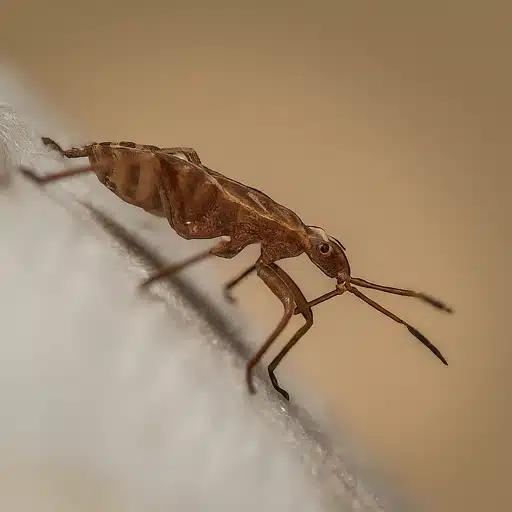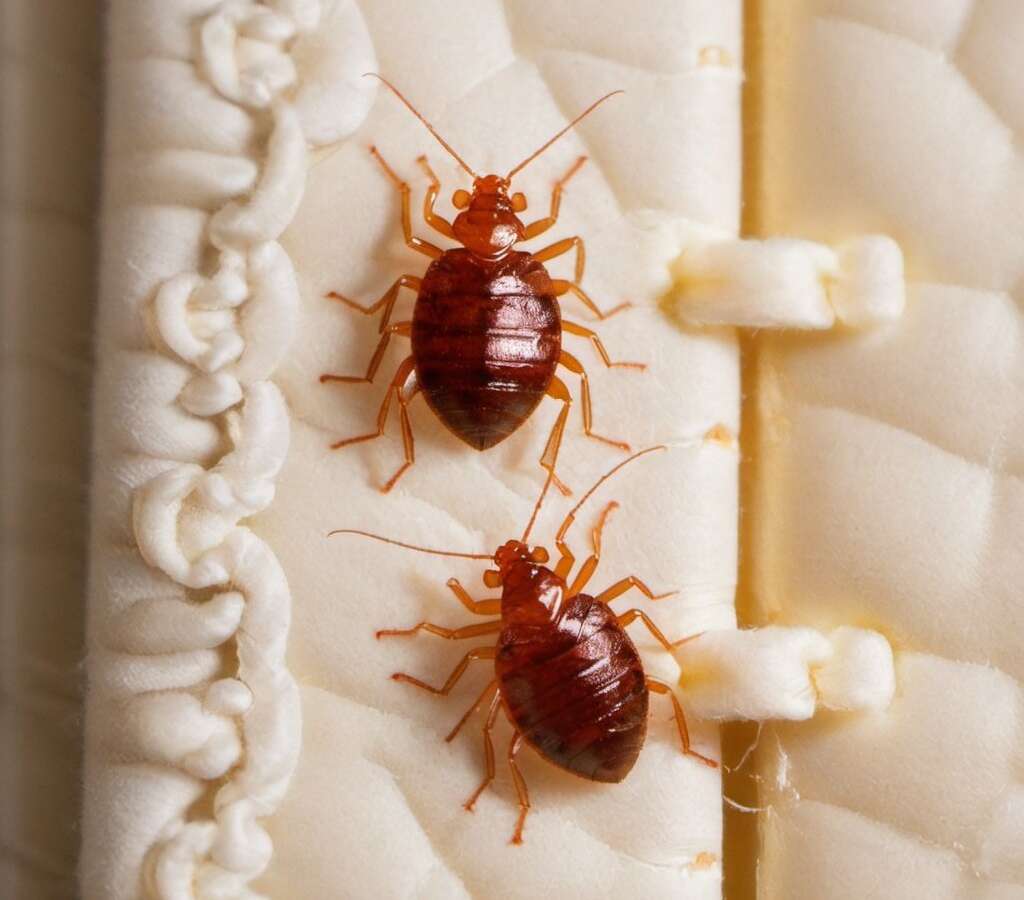Every night, we tuck our little ones into bed. And when we do, many of us send them off to sleep with the words, “don’t let the bedbugs bite.” Most people don’t even think twice about the statement. But in reality, bedbugs are no laughing matter. They are a growing problem in America. More people every day are finding themselves with issues with bedbugs in their homes and businesses. People must be vigilant in protecting their homes from these pestering insects. Let’s talk about bedbugs. We need to talk about how they get in your home, what they do once they’re there and how we can deal with them and get rid of them.
BEDBUGS AS BLOOD FEEDERS
Bedbugs are a parasite. They specifically feed on the blood of human beings. They only like to feed on human beings. A bedbug can survive on the blood of other animals, mostly mammals, but they cannot move forward in their life cycle. That means they can’t reproduce nor can they molt and grow. They have to have human blood to do these things. A bedbug starts as an egg. once the egg is prepared, it will hatch. Emerging from the egg will be a nymph. A nymph is a smaller version of the adult. It looks exactly like a reproductive adult, but, again, it’s much smaller.
The bedbug nymph will immediately begin to grow. It must feed first, but as it grows it will start to outgrow its exoskeleton. The exoskeleton is a hard substance known as chitin. It’s much like our fingernails and hair. This substance will stretch to a certain extent, but at some point it will no longer be able to expand to meet the needs of the growing insect. Once the exoskeleton has expanded as far as it can, the insect must molt. This is where the insect sheds its exoskeleton revealing a new brand new exoskeleton underneath. Before a bed bug can molt, it must feed on a human. That blood meal will give it enough energy to be able to make it through the molting process. For more information, contact your Broken Arrow exterminator.
BEDBUG DEVELOPMENT
Because insects are so small, conservation of energy is very important to them. They don’t carry any fat, and meals can be few and far between. In fact, a bedbug can actually lie dormant when they find themselves in a place with no way to feed. It can do this for up to a year and still survive. The bedbug nymph will molt a total of five times before it becomes a full grown adult. Once it becomes an adult, it will seek a mate. These insects mate through a process known as traumatic insemination. The female has no reproductive openings, so the male must break through the exoskeleton of the female in order to complete the mating process.
Once this is accomplished, the female must feed, and then she can begin to lay eggs, starting the process all over again. Bedbugs are believed to be a descendent of the bat bug. In fact if you ever saw a bedbug in a bat bug next to one another you would not be able to tell the difference. It takes an entomologist, or an insect scientist, to determine the difference between a bedbug and a bat bug. Your Tulsa pest control company can help.
ITS COUSIN, THE BAT BUG
The bat bug is much like the bedbug in that it feeds upon blood. But the bat bug feeds specifically on the blood of bats. It is suspected that, once upon a time, when humans lived in caves, the bat bug crawled down from the ceilings of the cave from the bats and began feeding upon people. As these bat bugs got more of a taste for human blood, the species divided into two separate species.
We have been dealing with bedbugs throughout history. The Egyptian‘s wrote about bedbugs and their fight against them. The Romans also dealt with bedbugs. There are many wives tales and mythical healing potions from the middle ages that describe using crushed bedbugs as an ingredient in their mixture. These bugs have been ubiquitous up until about the 1940s. At this time, a new pesticide was introduced. It was known as DDT.
THE RISE AND FALL OF THE BEDBUG
DDT was the wonder pesticide of that era. It could kill anything. And it did. Often pest control technicians would douse an entire mattress and bed frame with DDT in order to kill bedbugs. And bedbugs died in droves. In fact the population is dropped so low, it was thought that they were extinct for time. But then we discovered that DDT caused cancer in many people. Immediately the FDA and the EPA stepped in and stopped the use of DDT by pest control technicians and do it yourselfers. It’s better to call in a Tulsa exterminator for help.
Since that time, bedbugs have made a comeback. Every year there are more bedbug infestation‘s than there was the last year. Bedbugs have become very good at building up an immunity against certain pesticides that are being used against them. A common pesticide that was used against them in the 1990s was a family of pesticides known as pyrethroids. These pyrethroids were derived from pyrethrin which is the natural pesticide found in chrysanthemum flowers. It is a very safe pesticide, and easily made. It was a great solution for a time, but with overuse the bedbugs built up an immunity to them.
IMMUNITIES AND ELIMINATING BEDBUGS
Today, if you see an over the counter bedbug solution, it is in almost every case a pyrethroid. This means that these over the counter solutions for bedbugs don’t work. Only pesticides that are specifically restricted for use by licensed pest control technicians are strong enough and new enough for bedbugs. These insects have not had the opportunity to build up an immunity to these pesticides.
If you’re having issues with bedbugs or any other pests, it’s time to call in the best Broken Arrow pest control company. We specialize in dealing with bedbugs and any other pests that you may come in contact with. We service the greater Tulsa area including Owasso, Claremore, Coweta, Catoosa, Turley, Jenks, Bixby, Sand Springs, Broken Arrow, Sapulpa, Prattville and much more. Call today TermMax Pest Control for a free estimate. We’re here to help!




